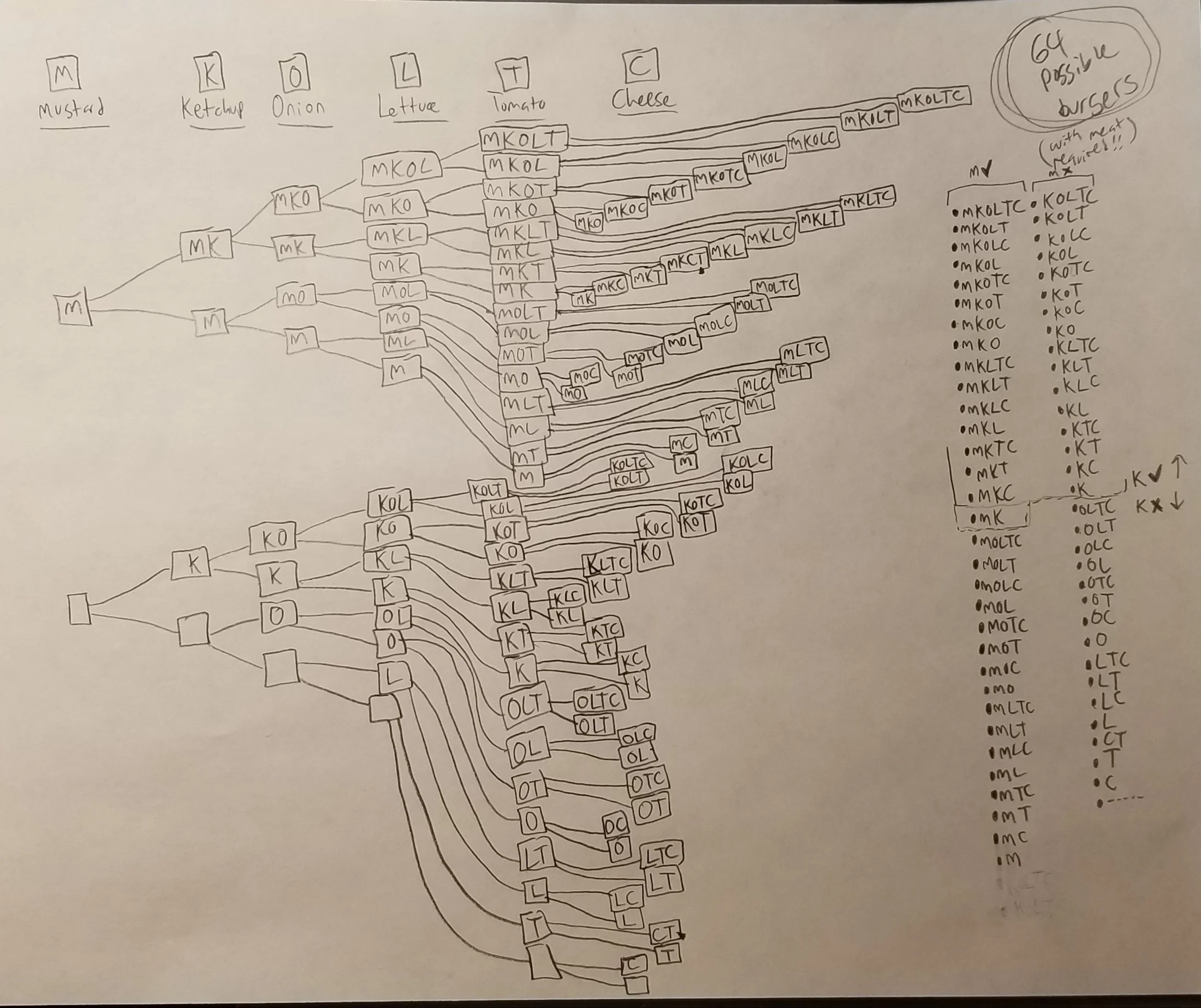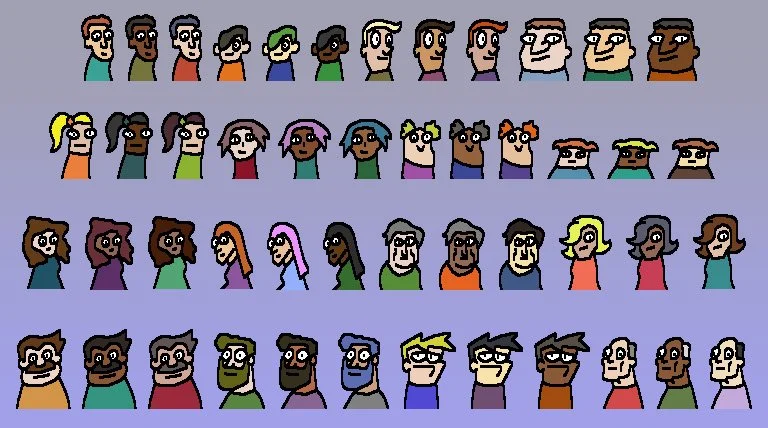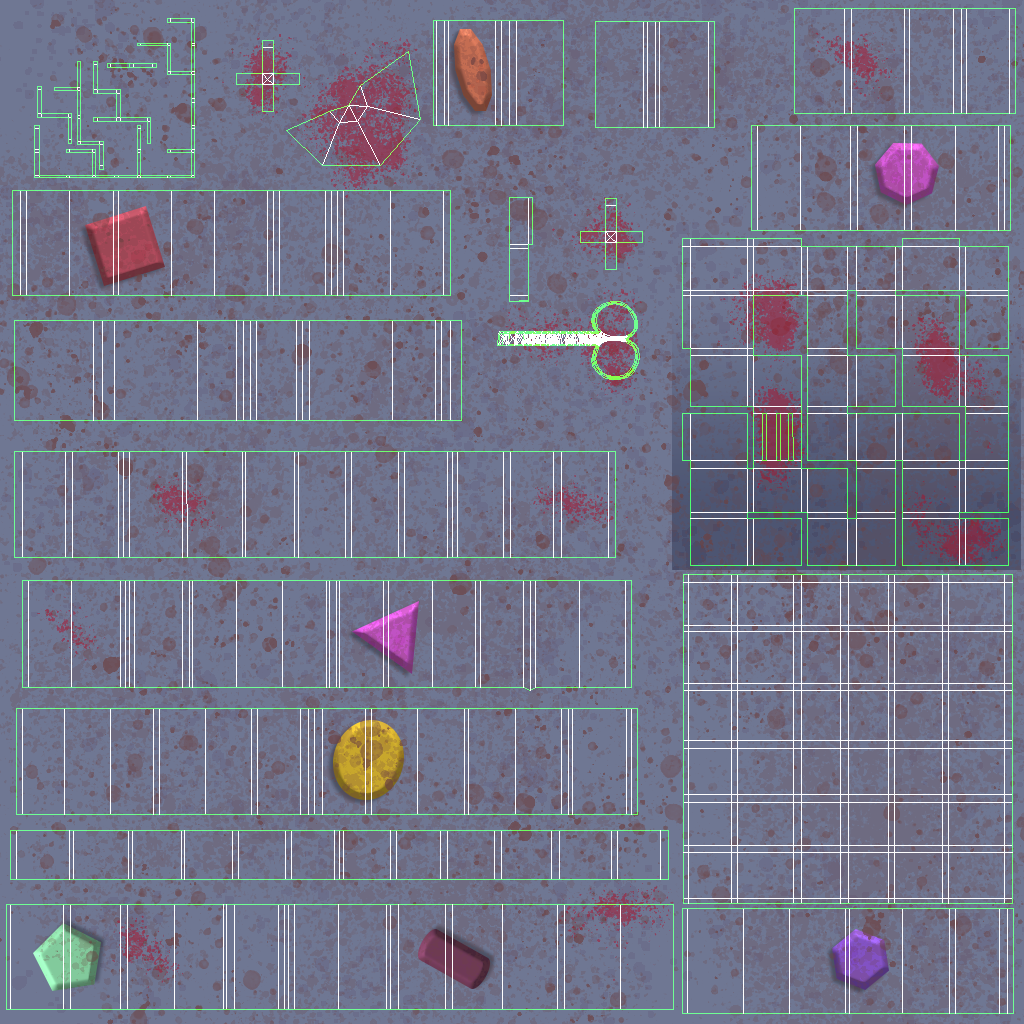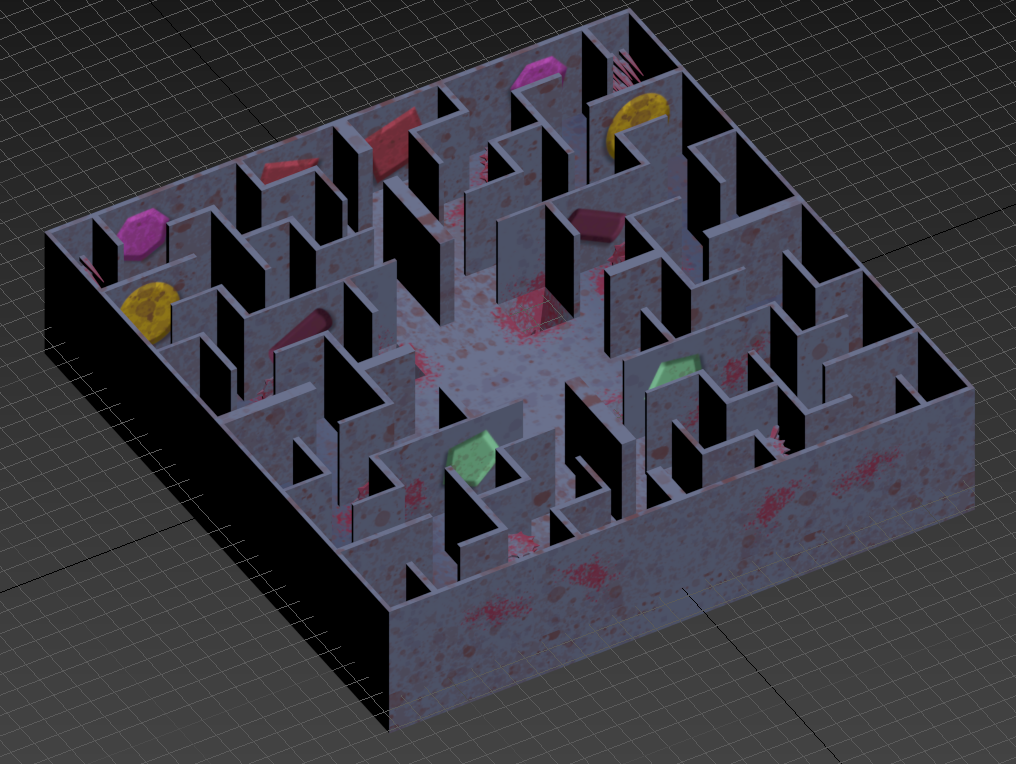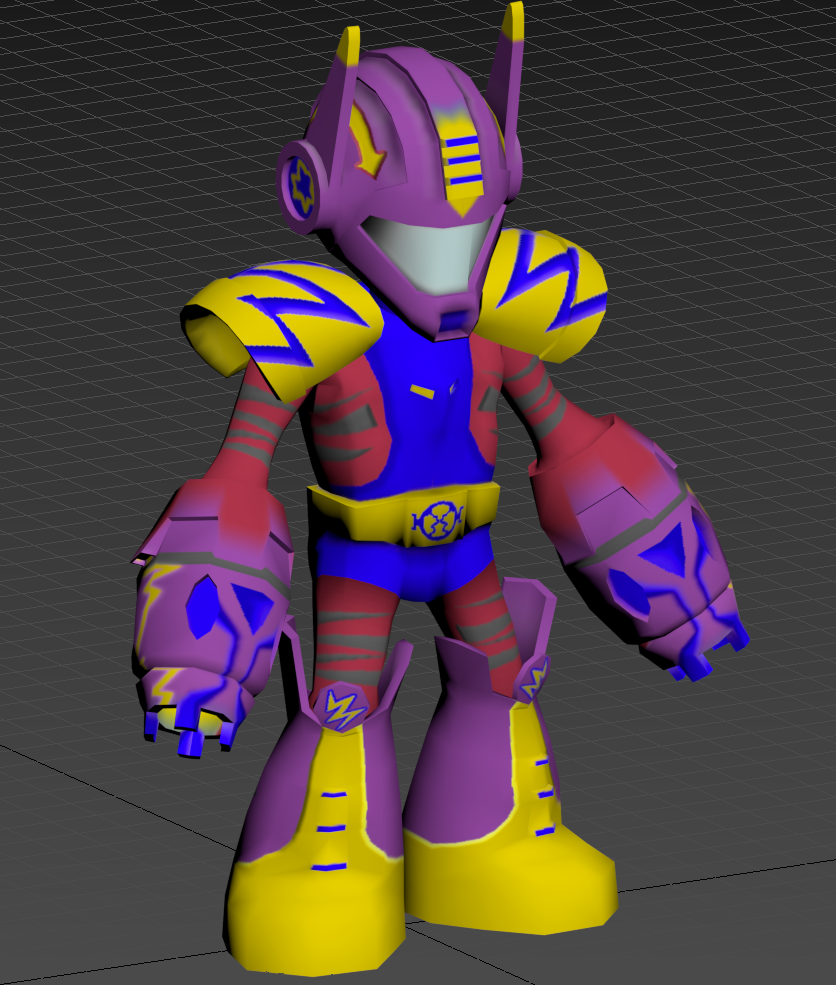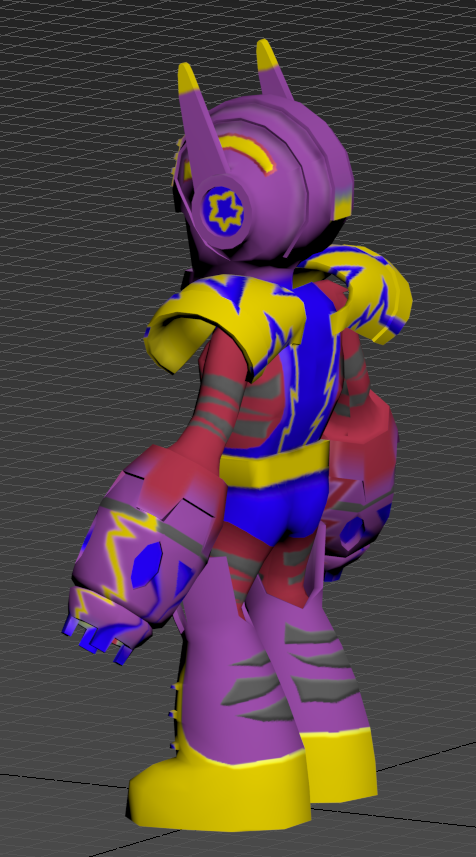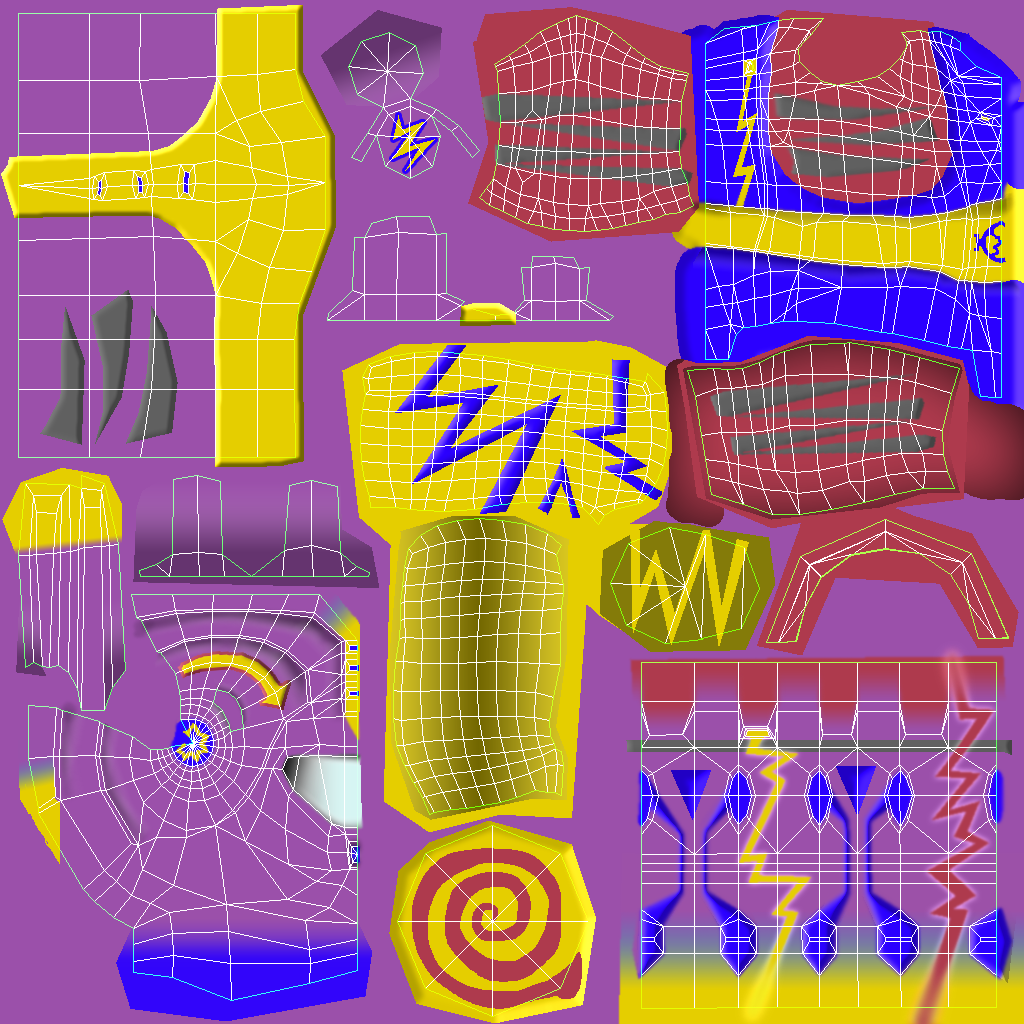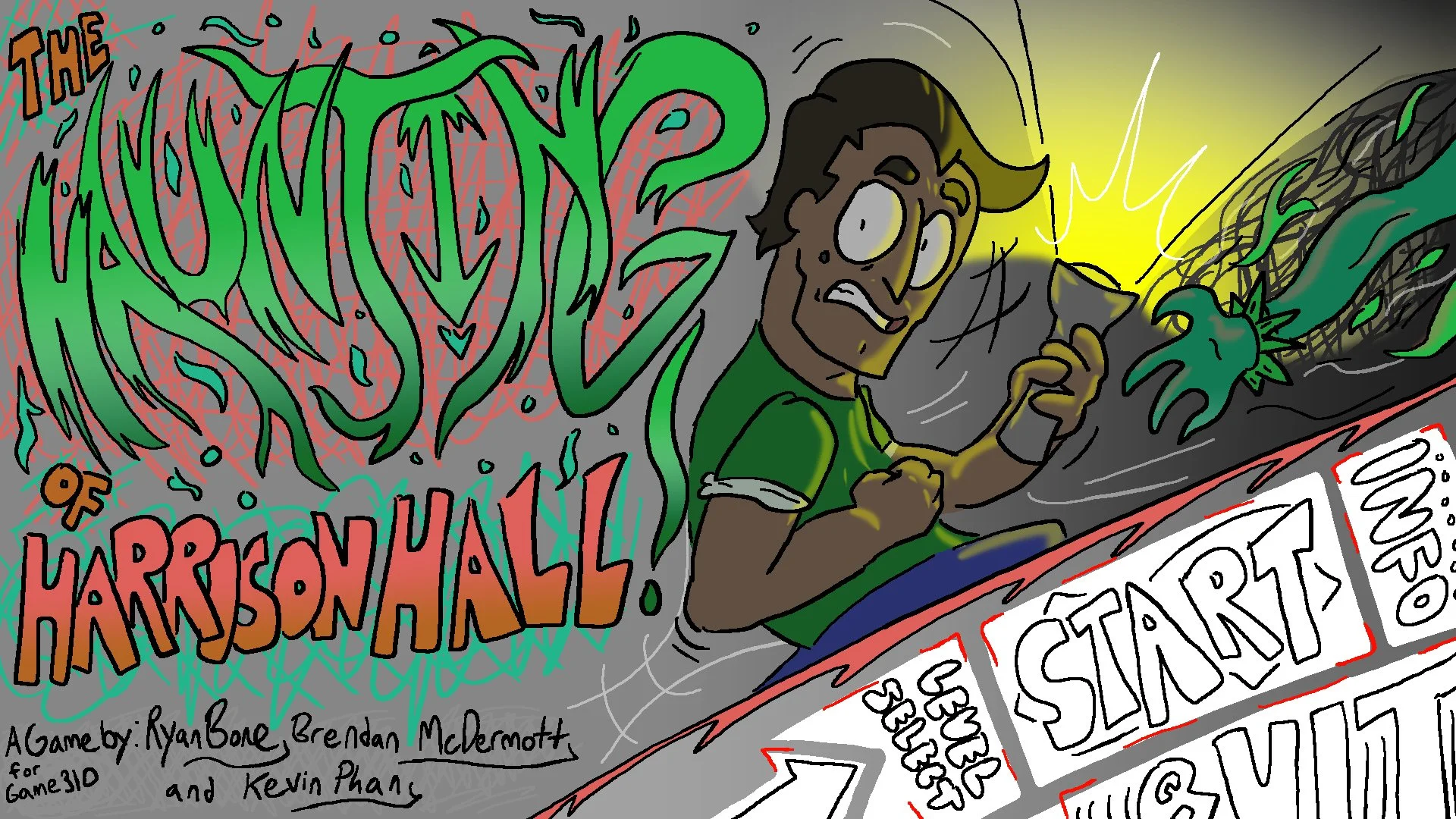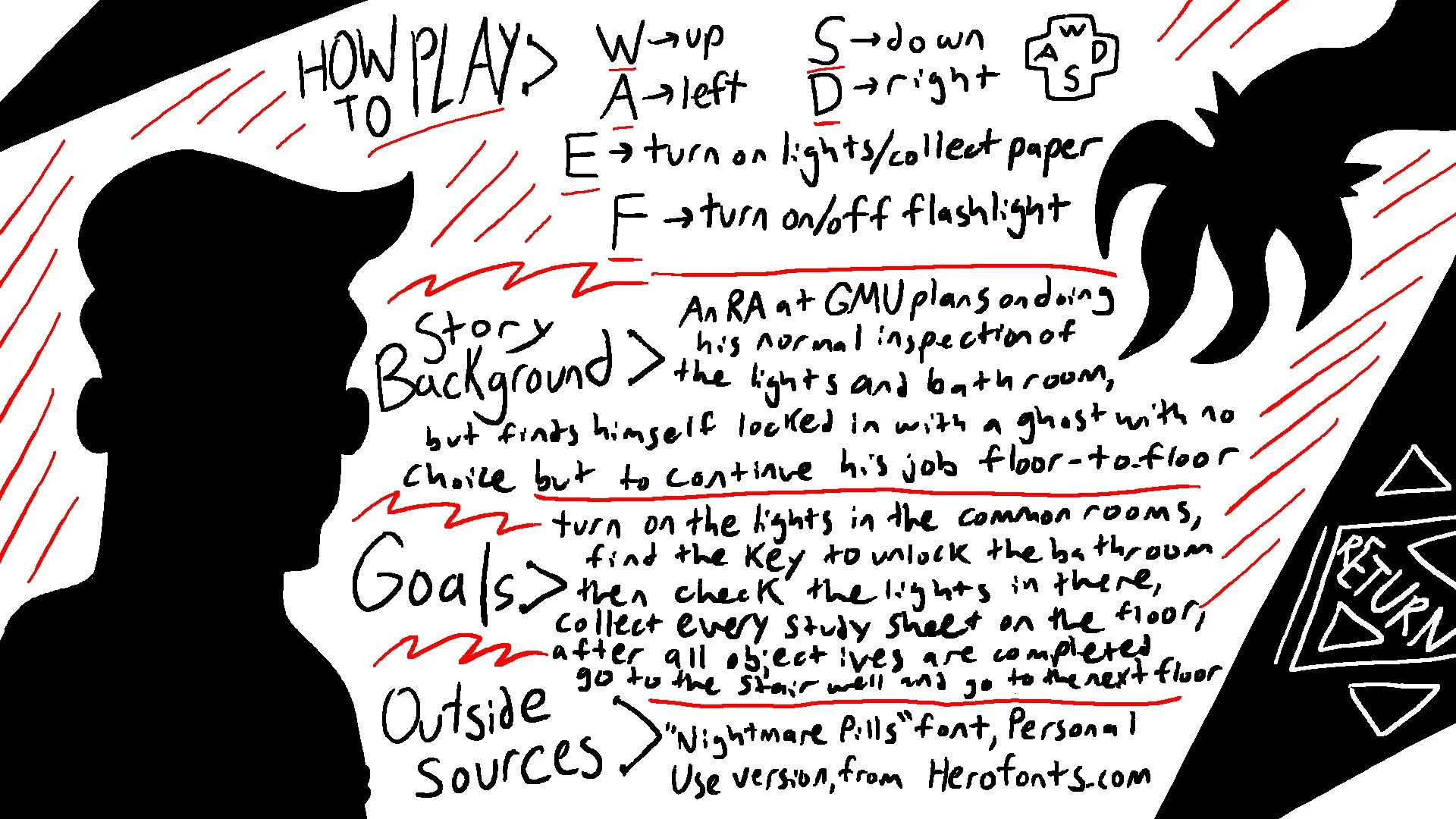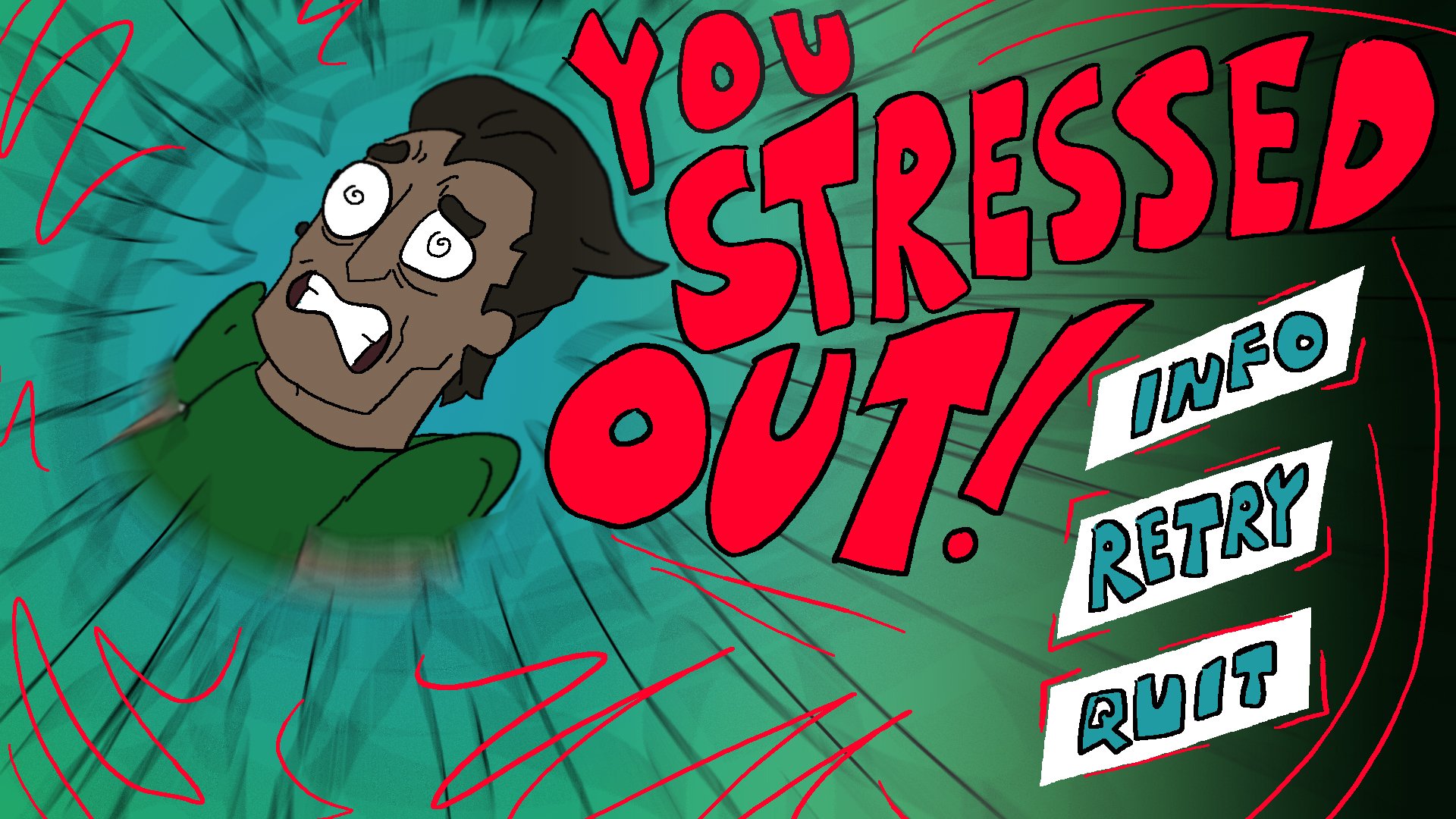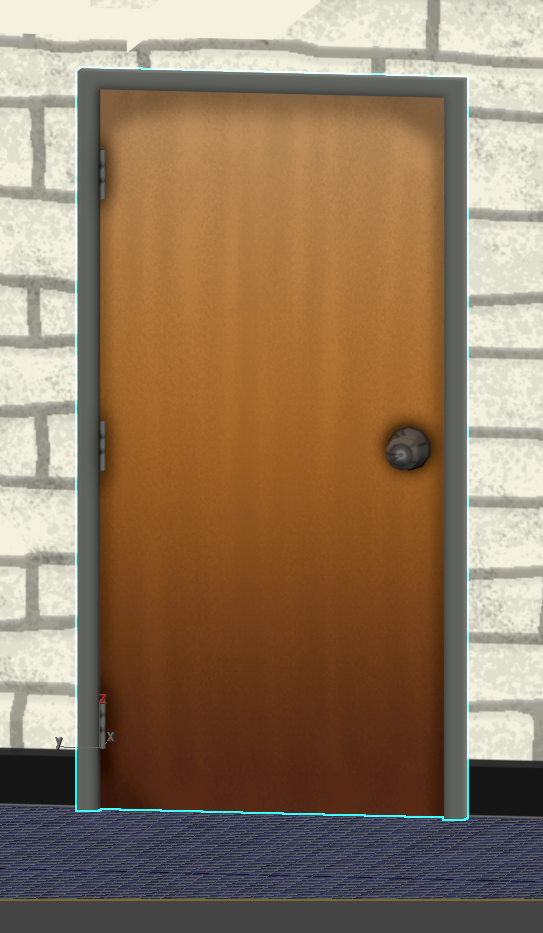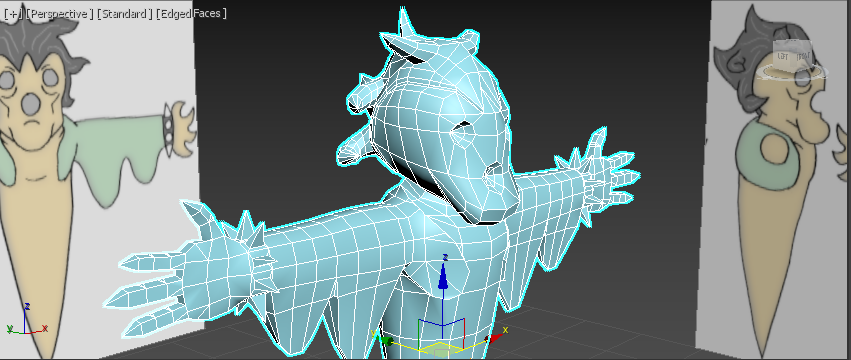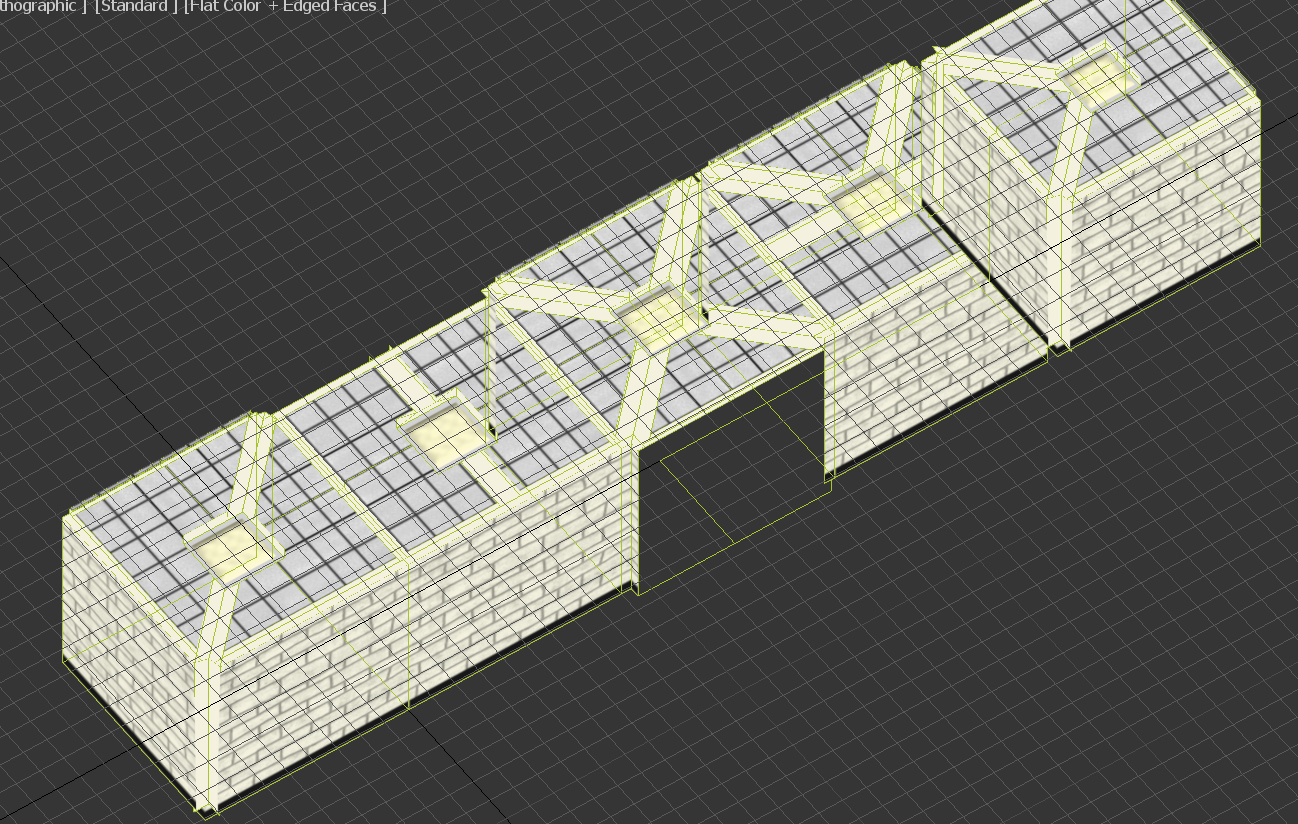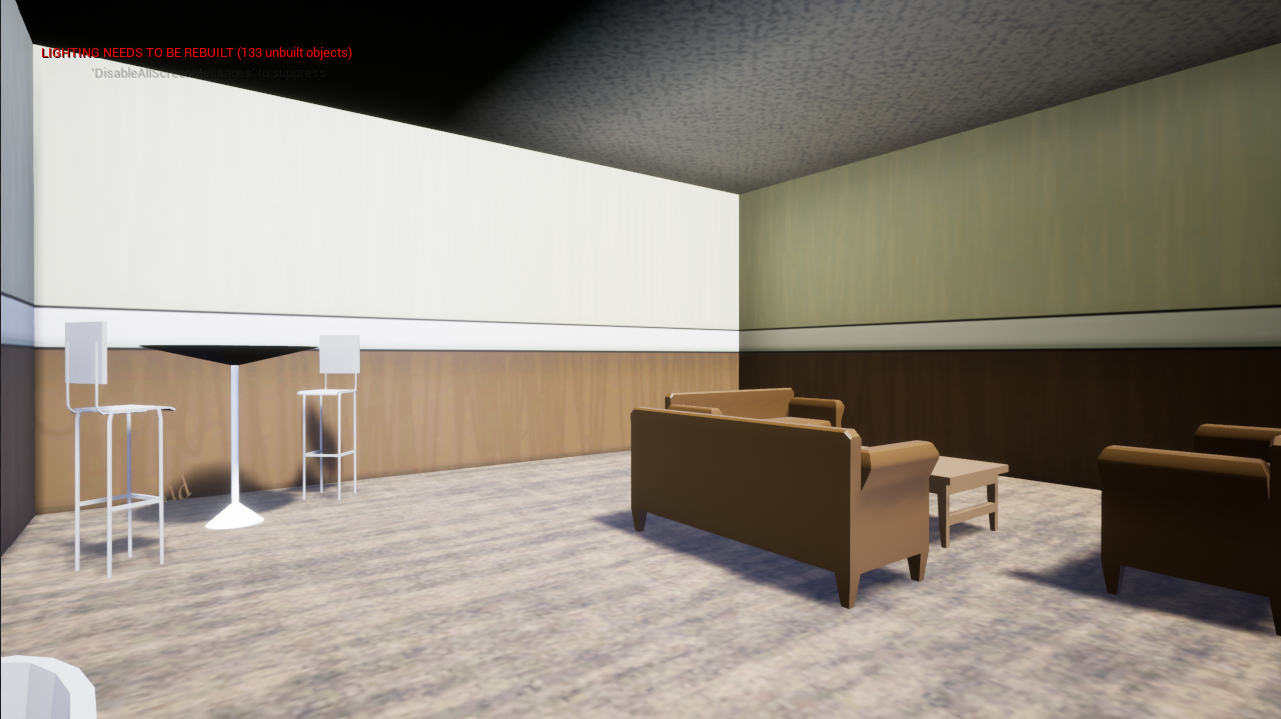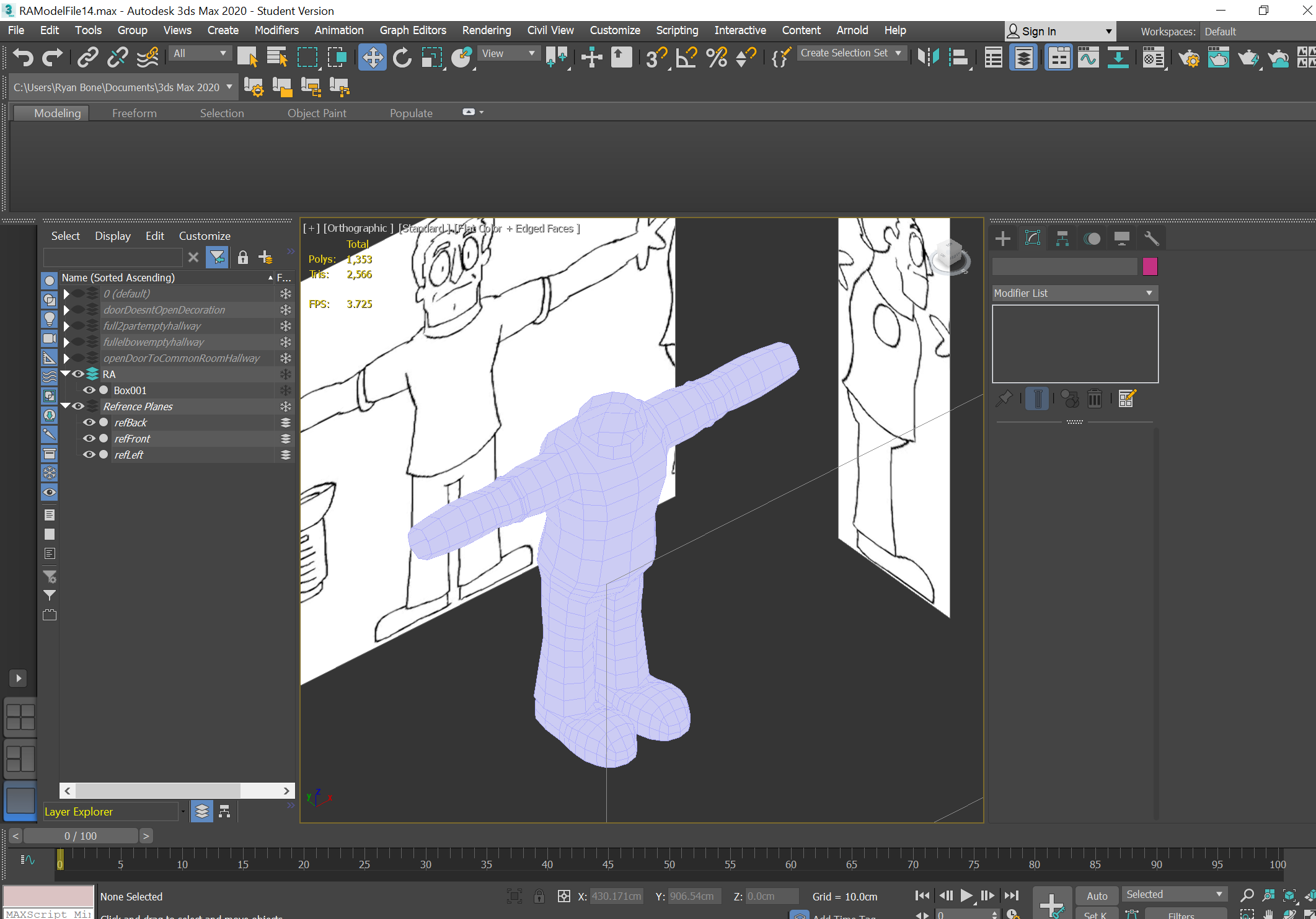Note: In this art section there is a mix of stuff I am proud of, and a mix of stuff I’m not a big fan of any more but I learned a lot from those projects. I’ll give a ton of information on the art, and a lot of reflection on them. I love hearing about processes and seeing people’s work and hearing all the details, it’s a big part of who I am! This website is kind of like a library for myself to look back on and remind myself how much I’ve grown, which is a satisfying feeling. If that’s not the kind of stuff you are interested in, then I’d recommend going to the Portfolio section, to see the best of what I have to offer! With that said, please enjoy!

Seeing others look at your art is exciting enough, but having them be able to interact with your art adds a whole knew layer of satisfaction.
At George Mason University, I’m a Computer Game Design major with a focus on the art and design aspects of video games. Growing up playing video games and seeing them evolve over time was so exciting, but I never thought about the art behind the games I was playing until I played Toby Fox’s Undertale in High School. After that game made me feel emotions I didn’t know a game could evoke, I knew that I would love to design a game that inspires impactful emotion in the players. So here’s a section that highlights the game related art I’ve made while learning the workings of the art form at GMU.
Note that not every piece of art showcased here is entirely mine, be sure to check the text around the videos/images to see what I made, and what was made by classmates in group projects.
More detail on 3D art made for some of these games can be found in the 3D Art section.
“Restaurant Rush”
This game was made as a group final project in GMU’s GAME 330 Computer Game Platform Analysis course, with Professor Dieterich. The task was to make a game that functioned with the limitations and benefits of the Nintendo DS in mind. We were given a Unity project that had a Nintendo DS environment to work in, along with controls already implemented (based on the touch pad, and buttons). Our group consisted of Kaitlyn Flynn, who made sound effects, Bobby Bronaugh, who worked on the main menu art, music, and additional sound effects, Kevin Phan, who made the idea for the game and handled the crazy coding (more on that below), and me, Ryan Bone, who designed the gameplay concepts, made all the art assets and created assets lists to organize the sound team. The game consists of the player attempting to get the high score by fulfilling as many orders from customers as they can before the timer runs out. The player makes the burgers by pressing certain parts of the screen, and dragging ingredients towards each other to make the burger with the right toppings to keep the customers satisfied. It’s a fun and challenging gameplay loop that I enjoyed both designing and making the art for.
“126 Burger Possibilities - Pixel Art Compilation”
“Restaurant Rush Original Game Layout Concept Art”
“Final Top Screen Design”
“Final Bottom Screen Design”
The art for “Restaurant Rush” was made with the pixel count on the top and bottom screen of the Nintendo DS in mind, which was a fun challenge. All the art I made for this game was created in Photoshop, using an X-Pen tablet. Since a lot of the art would be chosen randomly for variety in this arcade-style game, I made 48 possible customers (“48 Customer Possibilities - Pixel Art Compilation”) in art that could randomly appear to order burgers. The game’s burgers allowed for these possible toppings: mustard, ketchup, onions, lettuce, tomato, cheese, and meat. On top of this, the customers could also order a cup of water or fries. To allow for any combination of toppings, I made sprites for every possible type of burger, totaling at 126 burgers (“126 Burger Possibilities - Pixel Art Compilation”). In order to make sure I was on the same page as the coder, Kevin Phan, I made a chart of all the possible burger orders a customer could made, if the customers are required to put meat on their burger. I made the chart (“Chart of Possible Burger Orders”), where I represented each topping with a single letter that could be consistently referenced in the code for the game. Through designing and compromising on the idea for the game (“Restaurant Rush Original Game Layout Concept Art”), frequent concept art, updating old art (“Final Bottom/Top Screen Design”), I tried to keep the game on track so that we would have the game built within the four week deadline.
“Chart of Possible Burger Orders”
“48 Customer Possibilities - Pixel Art Compilation”
“Who’s The Real Monster Now?”
This game was made for GMU’s GAME 232 Online and Mobile Gaming, with Professor Nam, where I was tasked with joining a group to make a serious game with a PSA theme, within two weeks. Our team consisted of Amber Perkins, who came up with the idea for the game and wrote the dialogue, Bobby Bronaugh, who did the art for the backgrounds, Calvin Quick, who made the music and sound effects, Kevin Phan, who did the coding, and me, Ryan Bone, who did the art for the characters in the game. The made idea of the game was that a werewolf was a new student at the player’s school, and they get bullied for being different. The player is given choices in the story of how to approach helping the werewolf against the bullies, and through making those choices and seeing the consequences, the player will learn about the best ways to be anti-bullying, along with the importance of being kind. The art that I made for the game (“Dating Sim Characters”) consisted of, from left to right, 3 different expressions for the MC’s friend, Zack, 2 expressions for the teacher, 3 expressions for the bully, Tiffany, 3 expressions for the werewolf, Derek, and 1 expression for the two nameless bullies. I did the art for this game in Photoshop with an X-Pen tablet. My art has evolved a lot past the art shown in this game, but I still really like how these characters came out overall.
“Dating Sim Characters”
“Robot Maze Art Showcase”
In GMU’s GAME 231 Computer Animation for Games, with Professor Grimsby, where I first learned 3DS Max (I had learned Maya before), for the final project I had to model an original environment, an original collectable, and model then animate, rig, UV, and texture a character based off choices of 3-view perspective art given by Professor Grimsby (“Grimsby Robot”) [No tutorial or example was given for this character model, the only source was the image to reference]. I chose the reference the robot model, and it was super fun to model and texture (“Robot Front/Back/Textures/UVs”). For the environment, I made a dangerous maze (“Maze Top/Side/Textures/UVs”) with a few of the collectable, a huge battery (“Battery Front/Back/Textures/UVs”), hidden around the maze. Since this was my first time modeling and texturing something this big, it is very far from perfect and I’ve evolved a lot from this. Regardless, I still think this is cool enough to share, I personally love seeing people’s first works!
“Battery Front”
“Battery Textures/UVs”
“Maze Top”
“Battery Back”
“Maze Textures/UVs”
“Maze Side”
“Grimsby Robot” - PROFESSOR GRIMSBY’S CONCEPT ART - THE MODEL IS BASED ON THIS, NOT MY ART
“Robot Front”
“Robot Back”
“Robot Textures/UVs”
“VFX Showcase Level”
Also in GMU’s GAME 398 Advanced Game Design Studio, with Professor Grimsby, I was tasked with making a Unity VFX showcase level. I was given an empty environment, that contained a spinning sphere, a floating sword, and a playable character (who is just a sphere, themselves). I had to give an effect to the sword to make it seem powerful, an effect to the moving sphere to make it have a disappearing trail, and an effect of something falling from the sky. I spent a lot of time just having fun experimenting with Unity’s particle effects, and I eventually settled on my favorite effects, the strange ones on the sphere and sword. I tried to make the colorful, sporadic effect on those be as fun to look at as possible, and I think I accomplished that. For the effect of something falling from the sky, I went a more coherent direction by making leaves fall from the sky. I Photoshopped together a green and orange leaf, and let them fall from the sky, where they have a randomized width, height, and color tint to add more variety, as well as random trajectories to make it look like they are being effected by wind. The leaves fall pretty fast here, but without any extra coding I had trouble making the leaves disappear after a bit of time laying on the ground collision. The slower I made the leaves fall, the more time they had for their sporadic movement that made each leaf’s time up in the air much more random, making the timer I had set for their lifetime sometimes end way too early or late, before or after hitting the ground. Regardless, I think it came out well and is fun to look at, which was my main goal!
“Take a Beat!”
In GMU’s GAME 367 Writing & Editing Music/Sound course, with Professor Nolan, I was tasked with doing a group project within Unity, where music or sound effects were a part of the core gameplay. I came up with the idea of a game where the objective is to find a boombox in a 3D platforming level that is playing the correct song, when there are many other boomboxes that are playing a similar song. Our group consisted of Joey Costa, who coded the game and made a few sound effects, Kaitlyn Flynn, who made the menu music and models, Ryan Woerner, who made the music for each level and sound effects, and Hannah Martinez, who did the rest of the sound effects. I led the project, maintaining and updating the asset list (“Beat Asset List”), and I also created the title screen and a few textures for the backgrounds, though we eventually decided that the game would be solid colored. We made that decision both because the project only had 3 weeks to be completed, and because the maze-like levels were getting confusing to traverse and having certain sections be solid colors helped the players recognize their location and avoid backtracking.
“Beat Asset List”
“The Haunting of Harrison Hall”
This game was made as a group final project in GMU’s GAME 310 Game Design Studio course, with Professor Willis. It was made in Unreal Engine, using original art: models made in 3DS Max and textures made in Photoshop. Our group consisted of Brendan McDermott, who made the models, animations, and textures for the props, and the ghost, Kevin Phan, who coded and implemented the assets, and me, Ryan Bone, who made the models, animations, and textures for all the rooms, hallways, doors, and the main character. Together, we came up with the idea of a game that revolves around the idea of the stress experienced as a college student. We present this theme by revolving the story around a student collecting study sheets and rushing to do their Resident Advisor tasks, while being chased by a ghost of a student, formed out of their stress. We had a month and a half to make this game, and had a ton of fun making it together, generally managing to avoid the stress of the deadline by working ahead, coincidentally!
“HHH Poster”
“HHH Opening Comic”
“HHH End Game Comic”
“Filled Inventory UI”
“Empty Inventory UI”
I did the 2D art for “The Haunting of Harrison Hall”, which I made using Photoshop and an X-Pen tablet. I tried to go for a consistent sharp, but loose, art style on all the menus, comics, and on the poster for the game. I also made the 2D UI elements, which show what items the player has or has not collected (“Empty/Filled Inventory UI”).
“HHH Main Menu Screen”
“HHH Info Screen”
“HHH Pause Screen”
“HHH Game Over Screen”
“Main Character Concepts” - Pencil
“Ghost Character Concepts” - Pencil
“Environment Concept Art” - Pencil
To keep the cartoonish art style consistent for “The Haunting of Harrison Hall”, I drew the concept art for important parts of the game so the whole group could always be on the same page. First I made concept art with a variety of options for our two characters, the RA playable character (“Main Character Concepts”), and the ghost enemy (“Ghost Character Concepts”). I then drew concept art where I considered how we would get the environment tile set to work, and how many variations of tiles we would need (“Environment Concept Art”). After a group discussion about our options, I drew one more piece of concept art for the ghost, explaining the unique parts of its model and animations (“Final Ghost Character Concept”). With the design ideas finalized, I drew two perspective reference images for modeling, one for the main character (“Main Character 3 Perspectives”), and one for the ghost enemy (“Ghost Character 3 Perspectives”). With this all done, I moved on to modeling and texturing.
“Main Character 3 Perspectives” - Digital
“Ghost Character 3 Perspectives” - Digital
“Final Ghost Character Concept” - Digital
The 3D art for “The Haunting of Harrison Hall” was split between myself and Brendan McDermott. He made all the props, besides the doors (“Basic Doors, Door Variations”) and the player’s flashlight. He also made the entirety of the ghost enemy, based on my concept art, and nailed it perfectly (“Ghost Model WIP, Final Ghost Model”). I made the tile set for the game (“All Tiles Together From Above/Below”), made the textures for the walls of the common room (“Common Room Walls”), the broken stairwells (“Broken Stairwell WIP”), and the main character (“Main Character WIP/Front/Back”). As a group, we designed the levels that used these assets we made, where we snapped the tiles and rooms together (“Level WIP, Hallway Perspective”), and then allowed the ghost to roam the halls searching for the player.
“Basic Door”
“Door Variations”
“Broken Stairwell WIP”
“Ghost Model WIP” [Brendan McDermott’s 3D art based on my concept art"]
“All Tiles Together From Above”
“All Tiles Together From Below”
“Level WIP”
“Common Room Walls” [All work besides the room itself is by Brendan McDermott]
“Final Ghost Model” [Brendan McDermott’s 3D art based on my concept art"]
“Main Character WIP”
“Main Character Front”
“Main Character Back”
“Hallway Perspective”
[note: the gameplay was slightly edited, only showing my best attempts per level, so that you wouldn’t have to watch me fail over and over]
“Original Figment Game Concept Art”
“Dilo’s Rolling Adventure”
This game was made as a group final project in GMU’s GAME 330 Computer Game Platform Analysis course, with Professor Dieterich. The task was to make a game that functioned with the limitations of a fictional handheld console, “The Figment,” in mind, within the course of three weeks . The Figment has only one button and right and left buttons, a 754 x 540 pixel display, and only four green colors able to be displayed. We were given a Unity project that had an environment meant to replicate “The Figment” to work in, along with controls already implemented. Our group consisted of Kaitlyn Flynn, who thought of the visual theme, designed a level, made 3D models and 2D textures of the collectables and objectives, and made the sound effects, Bobby Bronaugh, who designed a level, and additional sound effects, Kevin Phan, who designed a level, handled the coding, and assisted with the documentation, and me, Ryan Bone, who designed the game, handled the documentation, designed a level, and 3D modeled (in 3DS Max) and 2D textured (in Photoshop) each level and the paddles. The game consists of the player using pinball paddles to help Dilo escape an ancient temple while collecting as many coins and points as they can. There are three “increasingly difficult, but safe, levels where there are no dangerous threats to the player, as if they fall through the bottom of the screen they are sent back to the previous level. There are a limited number of points the player can gain within each level, but the player may choose to go to the secret room on the left of the final level, where they can gain as much score as they dare to gain, with the risk of a game over, if they fall to the bottom! When thinking of the design for this game, I thought it would be fun to give the player the ability to risk their life (and effort, so far in this playthrough) for the glory of a high score in a dangerous level that poses a unique threat. To pitch the art style and concept of a small-scale pinball game, I drew “Original Figment Game Concept Art” to show what a potential level could look like, with pressure plates on doors, bumpers in corners, activatable totems, and the later scrapped idea of a ramped railway for another way of traversing the levels.





